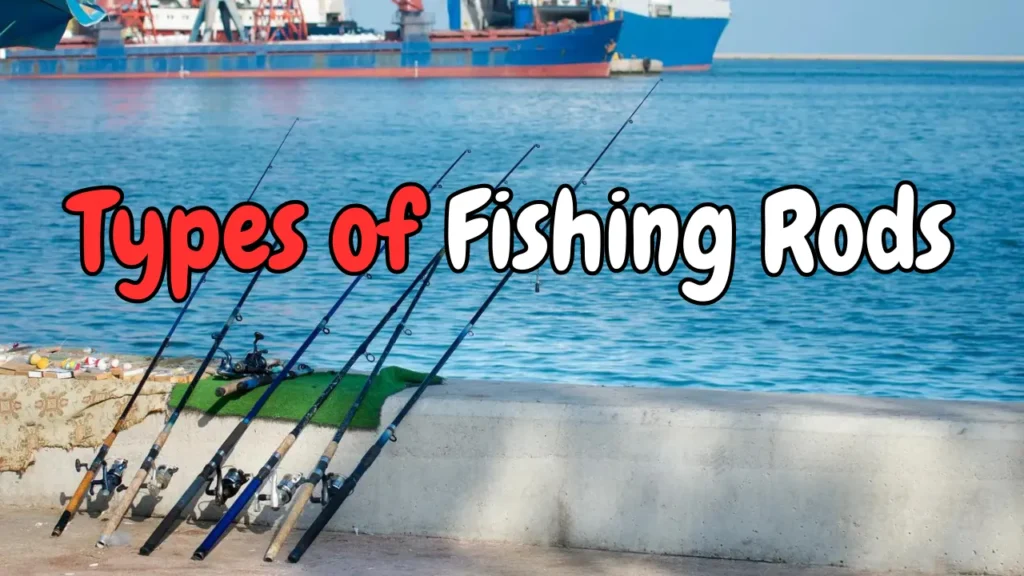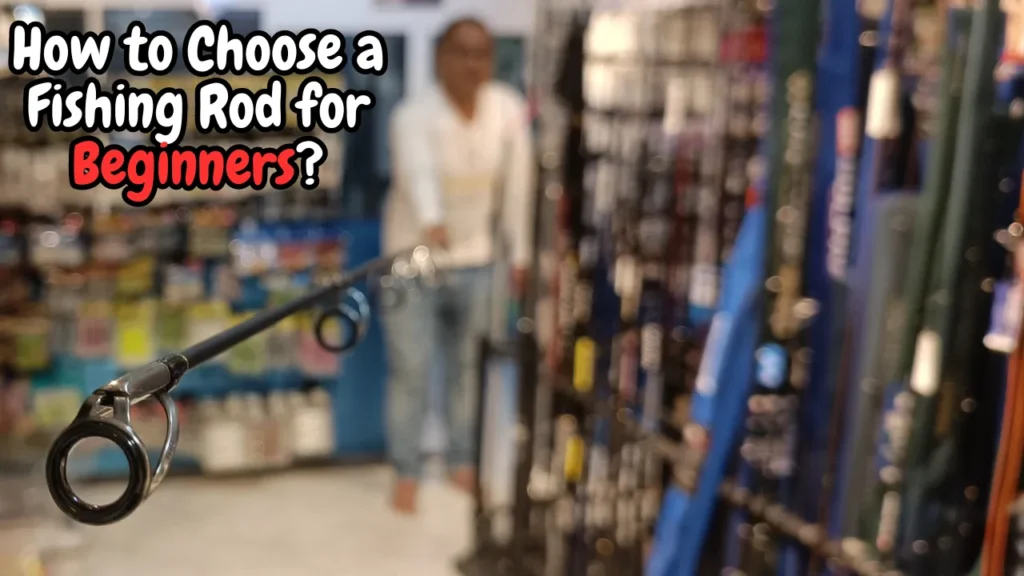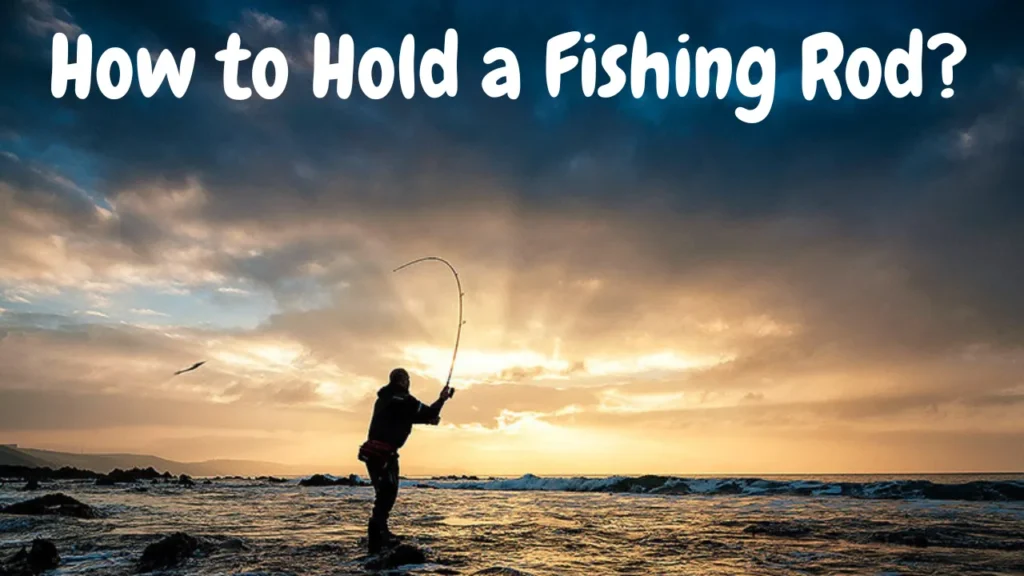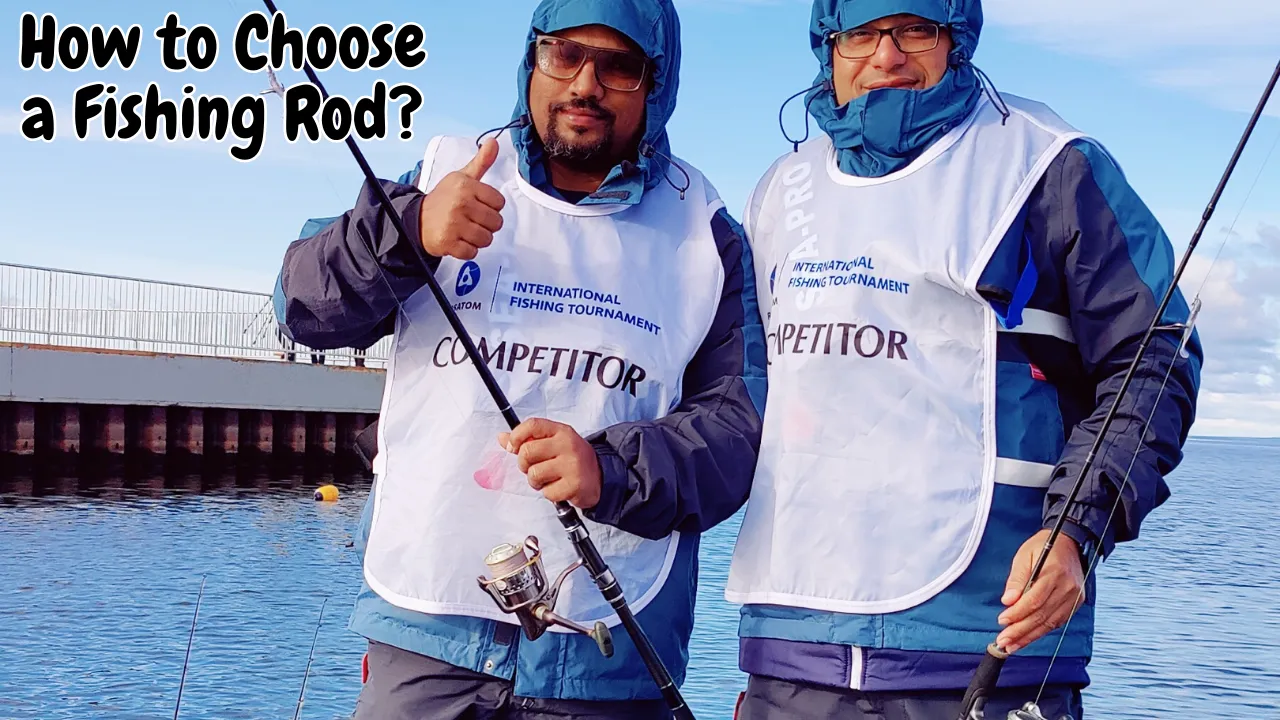Introduction
If you want to go fishing, you need a fishing rod, but it can be tough to choose the right one because there are so many kinds. Having the right fishing rod can make a big difference in whether you catch fish or not.
Things like the kind of fishing you’ll be doing, the kind of fish you want to catch, and how experienced you are can all affect which fishing rod is best for you. In this article, we’ll help you figure out how to choose the right fishing rod so you can have a great fishing experience.

Types of Fishing Rods
| Fishing Rod Type | Description |
|---|---|
| Spinning Rods | Designed for use with a spinning reel. Great for casting light lures and baits. Available in a variety of lengths and weights. Popular among beginners and experienced anglers. |
| Baitcasting Rods | Designed for use with a baitcasting reel. Typically shorter and heavier than spinning rods. Better suited for casting heavier lures and baits. Ideal for more advanced anglers. |
| Fly Rods | Designed specifically for fly fishing. Typically longer and thinner than other types of rods. Designed to cast lightweight flies with precision. Used to catch a wide variety of fish species. |
| Surf Rods | Designed for surf fishing. Typically longer and heavier than other types of rods. Used for casting baits and lures over long distances. Ideal for catching larger fish species. |
| Telescopic Rods | Designed to be collapsible, making them easy to transport and store. Available in both spinning and baitcasting models. Great for anglers who like to travel or fish in remote locations. |
| Ice Fishing Rods | Specifically designed for ice fishing. Typically shorter and lighter than other types of rods. Designed to be used in cold temperatures and come with special features, such as shorter handles and guides designed to prevent ice buildup. |
| Popping Rod | A popping rod is a type of fishing rod that is designed specifically for “popping” lures on the water’s surface to attract fish. |
| Jigging Rod | A jigging rod is a type of fishing rod that is designed specifically for vertical jigging, a technique used to target fish in deep waters. |
| Trolling Rod | A trolling rod is a type of fishing rod that is designed for trolling, which is a technique where an angler drags one or more lures behind a moving boat in order to target fish. |

How to Choose a Fishing Rod?
Choosing the right fishing rod is crucial to ensuring a successful and enjoyable fishing experience. Here are some factors to consider when selecting a fishing rod:
- Fishing technique: The type of fishing you plan to do will determine the type of rod you need. Different fishing techniques require different rods, such as baitcasting, spinning, fly fishing, trolling, and surf fishing.
- Rod length: Longer rods are great for casting long distances, while shorter rods provide better accuracy and control. Consider where you will be fishing, as a longer rod may be necessary for surf fishing or bank fishing.
- Power and action: The power of a rod refers to its strength and the amount of force required to bend it, while the action refers to how much of the rod bends and where. A fast-action rod bends mostly at the tip, while a slow-action rod bends throughout the length of the rod. The power and action you need will depend on the size of fish you are targeting and the type of bait or lure you are using.
- Material: Fishing rods can be made of graphite, fiberglass, or a combination of both. Graphite rods are lightweight and sensitive, while fiberglass rods are more durable and can handle heavier fish.
- Handle: The handle of the fishing rod should be comfortable to hold and provide a good grip, especially when wet. Handles can be made of cork, foam, or rubber.
- Price: Fishing rods can range in price from a few dollars to hundreds or even thousands of dollars. Consider your budget and how often you plan to use the rod before making a purchase.
Overall, it’s important to choose a fishing rod that is appropriate for the type of fishing you plan to do, is comfortable to use, and fits within your budget. Do some research, read reviews, and test out different rods if possible to find the one that works best for you.

How to Choose a Fishing Rod for Beginners?
Choosing a fishing rod for beginners can be a daunting task, as there are many options available. Here are some tips to help you select the right fishing rod as a beginner:
- Go for a versatile rod: As a beginner, you may not be sure which type of fishing you enjoy the most, so a versatile rod is a good option. Look for a medium-action spinning rod, which can be used for a variety of fishing techniques, such as baitcasting, jigging, and live bait fishing.
- Choose an appropriate length: For most beginners, a rod between 6 and 7 feet in length is suitable. This length provides good casting distance and accuracy, as well as enough sensitivity to detect fish bites.
- Check the power and action: As a beginner, you may not be familiar with the terms “power” and “action,” but they are important to consider when selecting a fishing rod. Aim for a rod with medium power and moderate action, which will provide enough strength to catch most fish while still allowing for good sensitivity and control.
- Look for a comfortable handle: The handle of the fishing rod should be comfortable to hold, especially when fishing for long periods. Look for a handle made of cork, foam, or rubber, and make sure it provides a good grip even when wet.
- Keep the budget in mind: Fishing rods can range in price, and as a beginner, you may not want to invest too much money in a rod until you are sure you enjoy the sport. Look for a rod that fits within your budget, but also offers good quality and durability.
Overall, selecting a fishing rod for beginners can be overwhelming, but following these tips will help you make an informed decision. Once you gain more experience and knowledge, you can always upgrade to a more specialized fishing rod that meets your specific needs.

How to Choose a Fishing Rod for Saltwater?
When it comes to choosing a fishing rod for saltwater, there are a few important factors to consider. Here are some tips to help you select the right fishing rod for saltwater fishing:
- Saltwater specific: Make sure to choose a fishing rod that is specifically designed for saltwater fishing. Saltwater rods are built with materials and components that can withstand the harsh saltwater environment.
- Choose a length based on fishing technique: The length of the rod you choose will depend on the fishing technique you plan to use. For surf fishing, a longer rod between 9 and 12 feet is typically used, while shorter rods around 6 to 7 feet are better for fishing off a boat or pier.
- Check the power and action: The power of the rod refers to its strength and the amount of force required to bend it, while the action refers to how much of the rod bends and where. For saltwater fishing, a rod with medium-heavy power and fast or moderate-fast action is a good choice, as it can handle large and powerful saltwater fish.
- Look for corrosion-resistant materials: Saltwater can corrode and damage fishing rods over time, so it’s important to choose a rod with corrosion-resistant materials. Look for a rod made of graphite, fiberglass, or a combination of both, with stainless steel guides and a reel seat.
- Comfortable handle: As with any fishing rod, the handle of the saltwater fishing rod should be comfortable to hold, with a good grip that won’t slip when wet. Look for a handle made of cork, foam, or rubber that feels comfortable in your hand.
- Budget: Saltwater fishing rods can be expensive, so it’s important to consider your budget when making a purchase. While it’s tempting to go for the cheapest option, investing in a higher quality saltwater fishing rod will pay off in the long run, as it will last longer and provide a better fishing experience.
Overall, when selecting a fishing rod for saltwater fishing, it’s important to choose a rod that can handle the challenges of saltwater fishing, is comfortable to use, and fits within your budget.

How to Choose a Fishing Rod for Freshwater?
Choosing a fishing rod for freshwater is an important step for any angler. Here are some tips to help you select the right fishing rod for freshwater fishing:
- Choose a length based on fishing technique: The length of the rod you choose will depend on the fishing technique you plan to use. For example, shorter rods between 5 and 6 feet are ideal for fishing in small creeks and streams, while longer rods between 7 and 9 feet are better for fishing in larger bodies of water.
- Check the power and action: The power of the rod refers to its strength and the amount of force required to bend it, while the action refers to how much of the rod bends and where. For freshwater fishing, a rod with light to medium power and fast or moderate-fast action is a good choice, as it can handle most freshwater fish.
- Determine the type of fishing: Different types of fishing require different types of rods. For example, if you plan to fish with live bait or lures, a spinning rod is a good choice. On the other hand, if you plan to use heavier baits or fish in heavier cover, a baitcasting rod may be a better choice.
- Look for a comfortable handle: The handle of the fishing rod should be comfortable to hold, especially when fishing for long periods. Look for a handle made of cork, foam, or rubber, and make sure it provides a good grip even when wet.
- Consider the materials: Fishing rods can be made from a variety of materials, such as graphite, fiberglass, or a combination of both. Graphite rods are generally more sensitive and lighter, while fiberglass rods are more durable and can handle heavier fish.
- Budget: Fishing rods can range in price, so it’s important to consider your budget when making a purchase. While it’s tempting to go for the cheapest option, investing in a higher quality freshwater fishing rod will pay off in the long run, as it will last longer and provide a better fishing experience.
Overall, choosing a fishing rod for freshwater fishing requires careful consideration of your fishing technique, the type of fishing you plan to do, and your budget. By taking these factors into account, you can select a fishing rod that will provide you with years of fishing enjoyment.

How to Hold a Fishing Rod?
Properly holding a fishing rod is essential to ensure a comfortable and effective fishing experience. Here are some steps to follow for holding a fishing rod:
- Grip the Handle: Hold the rod with your dominant hand, with your fingers wrapped around the handle. The handle should rest in the palm of your hand, and your thumb should be on top of the handle.
- Rest the rod on your forearm: Rest the butt of the rod on your forearm, with the reel facing upward. This will help you support the weight of the rod and reduce fatigue.
- Position your other hand: Position your other hand on the rod just above the reel, with your fingers wrapped around the rod. This will help you control the rod and reel in your catch.
- Maintain a relaxed grip: Maintain a relaxed grip on the rod, as a tight grip can lead to fatigue and reduce your sensitivity to bites.
- Keep your elbows close to your body: Keep your elbows close to your body to help you maintain control and reduce fatigue.
- Adjust your grip as needed: Adjust your grip on the rod as needed to accommodate changes in the fishing conditions or the size of the fish you’re catching.
Overall, holding a fishing rod properly requires a relaxed and comfortable grip, with both hands positioned in a way that allows you to control the rod and reel in your catch effectively.
Hold the Fishing Rod in your Right Hand or Left Hand?
Whether you hold the fishing rod in your right hand or left hand will depend on your personal preference and whether you are right or left-handed.
Most people hold the fishing rod in their dominant hand, which is typically the hand they write with. So, if you are right-handed, you will likely hold the fishing rod in your right hand, and if you are left-handed, you will likely hold the fishing rod in your left hand.
However, some anglers prefer to hold the rod in their non-dominant hand to allow for greater control when reeling in the catch with their dominant hand. Ultimately, it comes down to what feels most comfortable and natural for you.

Which Fishing Rod Brands we should go for?
There are many high-quality fishing rod brands available in the market, each with its own strengths and specialties.
I will recommend you guys to go for that brand which provides good after-sales service. Like if any part of your fishing rod gets damaged accidentally, then the brand should provide repair or replacement of that part with ease.
Here are some popular fishing rod brands that are known for their quality and performance:
- Shimano: Shimano is a well-known brand in the fishing industry, offering a wide range of fishing rods for both freshwater and saltwater fishing. Their rods are known for their sensitivity, durability, and overall quality.
- MajorCraft: Majorcraft is a Japanese fishing rod brand that specializes in producing high-quality rods for anglers of all levels. Established in 2004, Majorcraft has gained a reputation for using cutting-edge technology and innovative design to create some of the most advanced fishing rods on the market. The brand offers a wide range of rods for different types of fishing, including freshwater, saltwater, and fly fishing.
- DAIWA: Daiwa is a well-known fishing rod brand with a reputation for producing high-quality fishing equipment. Daiwa has expanded its product line to include a variety of fishing rods and reels for both fresh and saltwater fishing.
- Abu Garcia: Abu Garcia is another well-respected brand that produces high-quality fishing rods for a variety of fishing techniques. Their rods are designed to be lightweight, sensitive, and durable, making them a popular choice among anglers.
- St. Croix: St. Croix is a premium fishing rod brand that is known for its high-quality materials and craftsmanship. Their rods are designed for serious anglers and are highly sensitive, durable, and versatile.
- Ugly Stik: Ugly Stik is a popular brand among beginner and intermediate anglers, offering affordable and durable fishing rods that are designed to last. Their rods are known for their strength and versatility, making them a great choice for a wide range of fishing applications.
These are just a few examples of quality fishing rod brands. When choosing a brand, it’s important to consider your budget, the type of fishing you plan to do, and your personal preferences. Ultimately, the right fishing rod brand for you will depend on your individual needs and preferences.
Conclusion
In conclusion, choosing the right fishing rod is essential to have a successful and enjoyable fishing experience. Factors such as fishing technique, rod length, power and action, material, handle, and price must be considered before selecting a fishing rod.
It’s important to choose a fishing rod that fits your needs and budget, and testing out different rods if possible is recommended. For beginners, it’s advisable to go for a versatile rod that can be used for various fishing techniques and is comfortable to hold.
A medium-action spinning rod between 6 and 7 feet in length is suitable for most beginners. As for saltwater fishing, it’s crucial to choose a fishing rod that can withstand the corrosive nature of saltwater, has enough power to handle bigger and stronger fish, and provides a good grip.
It’s also important to choose a reel that’s suitable for saltwater fishing, as saltwater can damage freshwater reels. In conclusion, choosing the right fishing rod is a personal decision that depends on individual preferences and needs.
By considering the factors mentioned above, you’ll be able to find a fishing rod that fits your requirements and ensures an enjoyable fishing experience.
FAQ
Q: What is the difference between a fast-action and a slow-action fishing rod?
A: A fast-action rod will bend near the tip, while a slow-action rod will bend near the handle.
Q: How do I know what power rod to choose?
A: The power of the rod refers to its strength and is often classified as light, medium, or heavy. Consider the type of fish you’ll be targeting and the technique you’ll be using to determine the appropriate power.
Q: What is the most important factor to consider when choosing a fishing rod?
A: The most important factor to consider is the type of fishing you’ll be doing, as this will determine the other factors to consider such as the power and action of the rod.
Q: Can I use the same fishing rod for freshwater and saltwater
A: Yes, you can use the same fishing rod for both freshwater and saltwater fishing, but it’s important to make sure the rod is designed for both environments. Saltwater fishing requires rods that can withstand the corrosive saltwater environment, while freshwater rods don’t need to be as durable.
Q: What should I consider when choosing the length of my fishing rod?
A: When choosing the length of your fishing rod, consider the type of fishing you’ll be doing and the environment you’ll be fishing in. Longer rods are better for casting distance, while shorter rods are better for accuracy and control.
Alaska Fishing License 2023: A Complete Step-by-Step Guide
Daiwa Phantom Snapper V/S Daiwa Phantom Power Fishing Rods – Detailed Comparison

